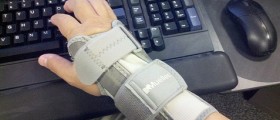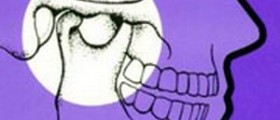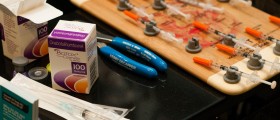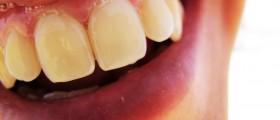
Oromandibular dystonia is a disorder characterized by forceful contractions of different muscles of the face, jaw and tongue. It affects the ability to open and close the mouth properly and it also affects speech and chewing.
Dystonia that affects face and lips of musicians who play wind instruments is called embouchure dystonia; lingual dystonia affects the tongue while cranial dystonia is a wider term that includes dystonia in any part of the head.
Oromandibular dystonia can be primary, meaning without any other disorder present, or secondary, associated with drug abuse or disorders such as Wilson’s disease.
Symptoms of oromandubular dystonia
Oromandibular dystonia is often associated with other types of dystonia such as spasmodic torticollis, which affects the neck, blepharospasm associated with eyelids or spasmodic dysphonia, which affects the larynx and therefore the speech.
Symptoms of oromandibular dystonia can be task-specific and only occur during certain activities, such as chewing. Drug-induced dystonia commonly affects the muscles of the face, resulting in involuntary grimaces.
In secondary oromandibular dystonia the symptoms may even persist during the night. The symptoms usually start between the ages 40 and 70. Oromandibular dystonia affects women more than men.
Treatment for oromandibular dystonia
Treatment for this disorder needs to be adapted to the patient, to his or her particular symptoms and to their severity. The most conventional treatment consist of oral medications, which may include clonazepam, trihexyphenidyl, baclofen, diazepam or tetrabenezine.
Another option is the injection of botulinum toxin or Botox in certain muscles, for example masseter, temporalis or lateral pterygoid. In most patients who have underwent this form of treatment there was an improvement of symptoms, especially those affecting chewing and speech. Botulinum toxin showed best results in patients with jaw-closure dystonia. Side effects of this treatment may include difficulty swallowing, slurred speech and weakness, but they are short-term and well-tolerated.
There has been some evidence showing that symptoms of oromandibular dystonia become less severe, at least temporarily, with the use of sensory tricks, such as gently touching the lip, chewing gum, chewing on a toothpick, talking, holding a finger below the chin or the eye. Different tricks work for different patients and this, of course, is no permanent treatment, only a way to temporarily alleviate the symptoms.
For some patients, speech and swallowing therapy seem to be very effective, especially in terms of improving the range of motion, strengthening the unaffected muscles and making it easier to perform everyday activities that involve speaking, swallowing, chewing and such.
Relaxation techniques are highly recommended as supplementary treatment for all patients with oromandibular dystonia.

















Your thoughts on this
Loading...